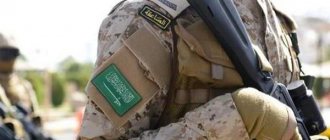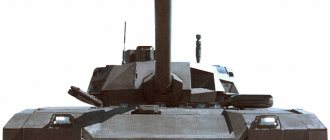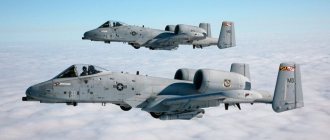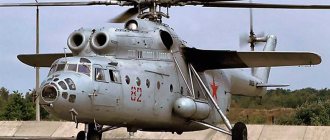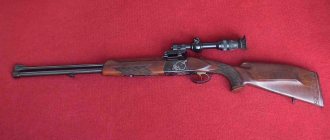Saudi Arabia is the largest state on the Arabian Peninsula, a country of deserts and green oases, the cradle of Islam. Once upon a time, the most ancient Arab states arose here. It is here that the cities of Mecca and Medina, sacred to all Muslims, where the Prophet Mohammed preached, are located. Today, Saudi Arabia remains one of the most traditional Muslim countries. The king has absolute power, the main law is the Koran. There are no bars, nightclubs or casinos in the country. However, there are many ancient monuments associated with the ancient history of the Arabian Peninsula, seaside resorts are popular among diving enthusiasts, and there are excellent shops and markets with a large selection of goods. Among the entertainment that Saudi Arabia offers are water sports, sea fishing in the Red Sea and the Persian Gulf, and, of course, the traditional local sport of camel racing.
Story
The lands of Saudi Arabia are the cradle of Arab tribes. From the beginning of the 1st millennium BC. e. In the south of the peninsula, the Minaan and Sabaean kingdoms existed; the most ancient cities of the Hijaz, Mecca and Medina, arose as their transit trading centers. At the beginning of the 7th century, a new religion emerged in Arabia - Islam. His followers soon created a powerful empire - the Caliphate, which lasted for several centuries. In the 16th century, Arabia came under the rule of the Ottoman Turks. The origin of the state of the Saudi dynasty dates back to 1744. Two emirates created by the Saudis were destroyed by the Ottoman Porte. It was only in 1926 that Abdul Aziz ibn Saud proclaimed himself king of the Hejaz. In 1932, after the unification of Hejaz and Najd, the Kingdom of Saudi Arabia was created. Colossal oil fields were discovered in Saudi Arabia in 1938, and by 1949 the country already had a well-established oil industry. Oil became the source of wealth and prosperity for the state.
Population of Saudi Arabia
In the total population approx. 23% are non-citizens of the kingdom (2002).
The average annual growth rate of the indigenous population is 3.27% (2002). In 1974-92 the population grew from 6.72 to 16.95 million people. The population in the 15-24 age group is growing especially rapidly.
Birth rate 37.25‰, mortality 5.86‰, infant mortality 49.59 people. per 1000 newborns, average life expectancy is 68.4 years, incl. men 66.7, women 70.2 (2002).
Sex and age structure of the population (2002): 0-14 years - 42.4% (men 5.09 million people, women 4.88 million); 15-64 years old - 54.8% (men 7.49 million people, women 5.40 million); 65 years and older - 2.8% (men 362.8 thousand people, women 289.8 thousand). Urban population 85.7% (2000). 78% of the population aged 15 years and over are literate (84.2% of men and 69.5% of women) (2002).
Ethnic composition: Arabs - 90%, Afro-Asians - 10%. The indigenous Saudis stand out, whose ancestors lived in the country for centuries - approx. 82%, Yemenis and other Arabs who arrived in the country after the 1950s. during the oil boom - approx. 13%, Berber nomads, whose numbers are declining. Languages: Arabic, European languages are also used.
The state religion is Islam. Almost all Muslims are Sunnis. Saudi Arabia is the birthplace of Islam, founded by the Prophet Muhammad. The entire life of the country is subject to strict laws and rules that have a thousand-year history. Men and women are prohibited from drinking alcoholic beverages. Breeding pigs and eating pork is prohibited. Mecca is the cradle of Islam and the birthplace of the Prophet Muhammad; the main shrine of the Muslim world is located there - the ancient sanctuary of the Kaaba. The second religious center is Medina, where the prophet is buried. Among the duties of a Muslim is fasting during Ramadan, the 9th month of the Muslim calendar (from late February to late March), when Muslims abstain from food and drink, and avoid entertainment and other pleasures until sunset. One of the pillars of Islam is the Hajj, a pilgrimage to Mecca that must be completed at least once in a lifetime. Millions of pilgrims from all over the world gather in Mecca.
Geography
Saudi Arabia is the largest state on the Arabian Peninsula. It is washed by the Red Sea and the Persian Gulf, bordered by Oman, Yemen, Jordan, Iraq and Kuwait, Qatar and the United Arab Emirates. In the west of the country, along the coast of the Red Sea, the al-Hijaz mountain range stretches. Most of the territory of Saudi Arabia is occupied by deserts and semi-deserts, which are inhabited by nomadic Bedouin tribes. The population is concentrated around several large cities in the west or east near the coast.
Nature
Flora
Most of the country is a vast desert plateau. In the northern and central parts of the country there are the largest sandy deserts: Big Nefud and Small Nefud (Dekhna), known for their red sands; in the south and southeast - Rub al-Khali (Arabic “empty quarter”) with dunes and ridges in the northern part up to 200 m. White saxaul and camel thorn grow here and there on the sands, lichens on the hamadas, and on lava in the fields - wormwood, astragalus, along the beds of the wadi - single poplars, acacias, and in more saline places - tamarisk; along the coasts and salt marshes there are halophytic shrubs.
camel thorn flower
A significant part of sandy and rocky deserts is almost completely devoid of vegetation. In the Asir Mountains there are areas of savannah where acacias, wild olives, and almonds grow. In the oases there are groves of date palms, citrus fruits, bananas, grain and vegetable crops.
almond tree
Fauna
The fauna of Saudi Arabia is diverse: antelope, gazelle, hyrax, wolf, jackal, hyena, fennec fox, caracal, wild ass, onager, and hare live here.
A caracal is not a lynx. But from the cat family
There are many rodents: gerbils, gophers, jerboas, etc. Many reptiles: snakes, lizards, turtles. Birds include eagles, kites, vultures, peregrine falcons, bustards, larks, hazel grouses, quails, and pigeons. Locusts breed in coastal lowlands. There are more than 2,000 species of coral in the Red Sea and the Persian Gulf, with black coral being especially prized. 39.64% of the country's area is occupied by 128 protected areas. In the mid-1980s Asir National Park was established, where almost extinct species of wild animals such as the oryx (oryx) and the Nubian ibex are preserved.
Oryx
Climate
The climate in Saudi Arabia is extremely dry. The average temperature in January ranges from +8 °C to +20 °C in cities in desert areas and from +20 °C to +30 °C on the Red Sea coast. Snow falls only in the Jizan mountains in the west of the country, and not every year. In summer, the temperature in the shade ranges from +35 °C to +43 °C. However, at night in the desert the temperature can drop to zero. In the center and east of Saudi Arabia it rains exclusively in late winter and spring, while in the west it rains only in winter.
Economy of Saudi Arabia
The economic development of modern Saudi Arabia is characterized by a high share of the oil industry, with a gradual expansion of production in related industries and a number of manufacturing industries.
Saudi Arabia's GDP, calculated using purchasing power parity, was $241 billion. GDP per capita $10,600 (2001). Real GDP growth 1.6% (2001). Saudi Arabia's share of the world economy (share of GDP) at current prices is approx. 0.4% (1998). The country produces almost 28% of the total GDP of Arab countries. In 1997, Saudi Arabia provided 13.9% of world oil production and 2% of gas. Inflation 1.7% (2001).
Number of employees: 7.18 million people. (1999). Most of those employed in the economy, approx. 56%, represented by immigrants.
Sectoral structure of the economy by contribution to GDP (2000): agriculture 7%, industry 48%, service sector 45%. In 2000, the mining industry accounted for 37.1%, the manufacturing industry - approx. 10%, GDP structure by employment: services 63%, industry 25%, agriculture 12% (1999). According to 1999 data, the largest number of employed people is 2.217 million people. — was in the field of finance and real estate, 1.037 million people. — in trade, restaurant and hotel business, 1.020 million people. - in construction. The rest were employed in other sectors of the service sector and industry, incl. OK. 600 thousand people - in processing.
Many of Saudi Arabia's well-known large companies grew out of traditional family-owned business groups. The industrialization of Saudi Arabia was carried out with the leading role of the state, therefore the economy is still dominated by companies and corporations with a high share of state capital, private capital is present in them on shares with the state capital. There are companies with foreign capital. The Saudi National Bank, Al-Rajhi Banking and Investment Corporation, grew in the 1970s and 1980s. from the oldest money-changing office of the Al-Rajhi family, which owns 44% of the bank's shares. National Industrialization Co. and National Ecological Development Co. are the country's first large companies of industrial and agricultural development, respectively, created with a predominance of private capital. The state oil and state holding company for oil and mineral resources PETROMIN with its system of subsidiaries in various areas of the oil industry from oil production to the production of oils, gasoline, etc. includes 14 large companies and serves as the basis of the entire structure of the industry. Some of these companies have foreign shareholding (McDermott, Mobil Oil Investment). In petrochemicals and heavy industry there is a similar structure, the central place is occupied by a holding company created in 1976), 70% of the capital of which belongs to the state. The role of private capital in this area of the economy is higher. Among the major ones are “Sharq”, “Ibn Sina”, “Hadid”, “Sadaf”, “Yanpet”. In other sectors of the economy, large ones include (cement production), Saudi Metal Industries (steel reinforcement), Az-Zamil Group (real estate, marketing), etc. There are various banks and insurance companies in the country.
The main industry is oil and gas, which accounts for the largest share of Saudi Arabia's GDP. It is controlled by the state through state authorized organizations and companies. K con. 1980s The state completed the purchase of all foreign shares in the oil industry. In the 1960s and 70s. The country experienced a rapid increase in oil production: from 62 million tons in 1969 to 412 million in 1974. This coincided with the outbreak of the global energy crisis in 1973 after the Arab-Israeli war. In 1977, Saudi oil exports generated $36.5 billion in revenue. In the 1980s Oil prices have fallen, but the oil and gas industry continues to generate significant revenues (approx. USD 40 billion per year), amounting to approx. 90% of the country's income comes from exports. Oil development is carried out at state-owned fields. It is produced from 30 major fields and exported through a system of pipelines, oil storage facilities and ports along the country's coast. In 2000, 441.4 million tons of oil and 49.8 million m3 of gas were produced. Saudi Arabia plays an important role in the Organization of Petroleum Exporting Countries (OPEC). In 2001, the country's quota in OPEC production was more than 7.54 million barrels. oil per day.
In the field of gas utilization, the largest project was the construction in 1975–80 of a unified system for collecting and processing associated gas, through which gas is exported and supplied to petrochemical enterprises. Production volume - 17.2 million tons of liquefied gas (1998). In the field of oil refining, there are 5 largest oil refineries in Yanbu, Rabah, Jeddah, Riyadh and Ras Tannur. The latter processes more than 300 thousand tons. Most of the production is of fuel oil and diesel fuel. The production of automobile and aviation gasoline and jet engine fuel has been established.
Large SABIC-controlled plants located in the industrial centers of Jubail, Yanbu and Jeddah carry out petrochemical and metallurgical production. In 1990-96, the volume of production increased from 13 to 22.8 million tons. 12.3 million tons of petrochemical products, 4.2 million tons of fertilizers, 2.8 million tons of metals, 2.3 million tons of plastics were sold on the market. By 1997, SABIC's production volume reached 23.7 million tons, and by 2000 production capacity was planned to increase to 30 million tons. Petrochemical products include ethylene, urea, methanol, ammonia, polyethylene, ethylene glycol, etc.
The mining industry is poorly developed. In the beginning. 1997 A state mining company was created. Currently, gold deposits are being developed northeast of Jeddah. In 1998, approx. 5 tons of gold, 13.84 tons of silver. Salt and gypsum are being developed.
From the beginning 1970s In Saudi Arabia, the construction materials industry developed rapidly due to the construction boom. The basis of the industry is the production of cement; it increased from 9,648 thousand tons in 1979 to 15,776 thousand in 1998. Glass production has been developed.
The metallurgical industry is represented by the production of reinforcing steel, steel rods, and some types of shaped rolled products. Several enterprises have been built.
In 1977, a plant of a Saudi-German truck assembly company began producing products. There is a small shipyard in Dammam that produces oil barges.
Important industries include seawater desalination and energy. The first desalination plant was built in Jeddah in 1970. Water is now supplied from the coast to the central cities. Between 1970 and 1995, the capacity of desalination plants increased from 5 to 512 million US gallons of water per year. It was electrified approx. 6,000 cities and towns throughout the country. In 1998, electricity production amounted to 19,753 MW; in 1999, production capacity reached 23,438 MW. Electricity demand is expected to grow at an annual rate of 4.5% over the next two decades. It will be necessary to increase its production to approx. 59,000 MW.
The light, food and pharmaceutical industries are developing rapidly. Light industry is mainly represented by craft-type enterprises. The country has more than 2.5 thousand enterprises producing food and tobacco products, 3,500 carpet, textile, clothing and footwear factories, more than 2,474 woodworking factories, and 170 printing houses. The government encourages the development of manufacturing enterprises with private capital. Based on the results of issuing licenses in the 1990s. the highest priorities were the creation of production of petrochemical goods and plastics, metalworking and mechanical workshops, the production of paper products and printing products, food, ceramics, glass and building materials, textiles, clothing and leather goods, and woodworking.
The share of agriculture in the country's GDP was only 1.3% in 1970. During 1970–93, the production of basic food products increased from 1.79 million to 7 million tons. Saudi Arabia is completely deprived of permanent watercourses. Land suitable for cultivation occupies less than 2% of the territory. Despite this, Saudi Arabian agriculture, subsidized by the government and using modern technology and machinery, has become a dynamic industry. Long-term hydrological studies begun in 1965 have identified significant water resources suitable for agricultural use. In addition to deep wells throughout the country, Saudi Arabia's agriculture and water industries rely on more than 200 reservoirs with a total capacity of 450 million m3. The agricultural project in Al-Hasa alone, completed in 1977, made it possible to irrigate 12 thousand hectares and provide jobs for 50 thousand people. Other major irrigation projects include the Wadi Jizan project on the Red Sea coast (8 thousand hectares) and the Abha project in the Asirah mountains, in the southwest. In 1998, the government announced a new agricultural development project worth $294 million. The area of cultivated land by mid. 1990s increased to 3 million hectares, the country began to export food, food imports decreased from 83 to 65%. According to the export of wheat from S.A. in the 2nd half. 1990s ranked 6th in the world. More than 2 million tons of wheat, more than 2 million tons of vegetables are produced, approx. 580 thousand tons of fruit (1999). Barley, corn, millet, coffee, alfalfa and rice are also grown.
Livestock farming is developing, represented by the breeding of camels, sheep, goats, donkeys and horses. An important industry is fishing and fish processing. In 1999, approx. 52 thousand tons of fish. Fish and shrimp are exported.
The length of the railways is 1392 km, 724 km have two tracks (2001). In 2000, 853.8 thousand passengers and 1.8 million tons of cargo were transported by rail. Road transport numbers more than 5.1 million vehicles, of which 2.286 million are trucks. The length of roads is 146,524 km, incl. 44,104 km of paved roads. In the 1990s. The construction of the Trans-Arabian Highway was completed. Pipeline transport includes 6,400 km of pipelines for pumping oil, 150 km for pumping petroleum products and 2,200 km of gas pipelines, incl. for liquefied gas. Maritime transport has 274 vessels with a total gross cargo capacity of 1.41 million tons, of which 71 large vessels have a capacity of St. 1000 tons, including 30 tankers (including those for transporting chemicals), cargo ships and refrigerators, there are also 9 passenger ships (2002). 90% of cargo is delivered to the country by sea. The fleet transported 88.46 million tons of cargo in 1999. The largest ports are Jeddah, Yanbu, Jizan on the Red Sea coast, and a number of other ports are expanding. Dammam is the country's second most important commercial port and the largest port in the Persian Gulf. Another major port in the Gulf is Jubail. The largest oil port is Ras Tanura, through which up to 90% of oil is exported. There are 25 commercial airports in the kingdom. The largest international ones are the airport named after. King Abdulaziz in Jeddah (halls can simultaneously accommodate 80 thousand pilgrims, cargo turnover is about 150 thousand tons per year), airport named after. King Fahd in Dammam (12 million passengers per year), airports in Riyadh (15 million passengers per year) and Dhahran. Others are airports in Haile, Bisha and Badan. Saudi Arabia is the largest airline in the Middle East. In 1998, 11.8 million passengers were transported.
In Saudi Arabia, the communication system has 3.23 million landline telephone lines and more than 2.52 million mobile phone users, approx. 570 thousand Internet users (2001). 117 television channels are broadcast. The country is actively participating in the creation of pan-Arab satellite communications. There are several national television and radio channels and approx. 200 newspapers and other periodicals, incl. 13 daily.
Trade is a traditional area of economic activity in Saudi Arabia. Mostly industrial and consumer goods are imported. To encourage national industry, a 20% duty is imposed on goods that compete with locally produced goods. The import of alcohol, drugs, weapons, and religious literature into the country is strictly regulated. Other service sectors are related to real estate and financial transactions, in which the activities of foreigners are limited.
Until recently, the development of tourism was mainly associated with serving pilgrims coming to Mecca. Their annual number is approx. 1 million people In con. 1990s a decision was made to make foreign tourism the most important service sector. In 2000, approx. $14.4 billion. There were 200 hotels in the country.
Modern economic policy is characterized by state participation in the main sectors of the economy and limiting the presence of foreign capital. At the same time, with the con. 1990s a course is being pursued to simultaneously expand the activity of national private capital, privatization, and stimulate foreign investment. Oil and gas production remains in the hands of the state. Social policy includes providing social guarantees for the population, support and subsidies for youth and families. At the current stage, this is combined with stimulating the training and retraining of national personnel to work in industry and the private sector of the economy.
The country's monetary system is characterized by the provision of the national currency with the help of foreign exchange earnings from oil exports and a liberal exchange rate regime. Control over money circulation and the banking system is carried out by the Currency Agency. Independent activity of foreign banking capital is not yet permitted. In a number of joint banks with foreign capital, the controlling stake is national. There are 11 commercial banks and special development banks, as well as funds for financial assistance to Arab countries. Banks operate under the Islamic system and do not charge or pay fixed interest.
The country's state budget is formed by 75% from revenues from oil exports. Taxes until the end 1990s were absent, except for religious ones. In 1995, indirect taxes were estimated at S$1,300 million. rials (less than 0.3% of GDP). Currently, corporate income tax and personal income tax are being introduced. The introduction of a value added tax, etc. is being considered. The largest items of budget expenditures: defense and security - 36.7%, human resource development - 24.6%, public administration - 17.4%, healthcare - approx. 9% (2001). Budget revenues are 42 billion US dollars, expenses are 54 billion (2002). There is significant domestic debt. External debt is estimated at US$23.8 billion (2001). Gross capital investment - 16.3% of GDP (2000).
The standard of living of the country's population is relatively high. Average industrial wages are $7,863.43 per year (2000).
The country's trade balance is active. The value of exports is 66.9 billion US dollars, imports are 29.7 billion US dollars. The main export item is oil and petroleum products (90%). Main export partners: USA (17.4%), Japan (17.3%), South Korea (11.7%), Singapore (5.3%), India. Machinery and equipment, food, chemicals, cars, and textiles are imported. Main import partners: USA (21.1%), Japan (9.45%), Germany (7.4%), UK (7.3%) (2000).
Attractions
Riyadh is the capital of Saudi Arabia. The city is still more of a political capital and a symbol of royal power and is not overloaded with enterprises or international structures, retaining a considerable part of its national flavor. The center and oldest part of Riyadh - Al-Bataa contains almost all the historical buildings of the city. The citadel of old Riyadh, Masmak Fortress, was built around 1865. These days it has been turned into one large museum dedicated to Abdel Aziz and his role in unifying the kingdom. The Riyadh Museum contains an extensive collection on the history and archeology of the kingdom from the Stone Age to the early Islamic period, an exhibition of Islamic architecture and a separate ethnography room.
30 km from Riyadh is Diraya, the first capital of Saudi Arabia, which was destroyed in 1818. Now among the intensively restored ruins you can see several palaces, mosques and the old city wall.
Mecca is the spiritual center of Islam, an ancient city located in the western part of the country. It was in Mecca around 570 AD. e. Prophet Mohammed, the founder of Islam, was born. The center of the city is the Great Mosque, which can accommodate up to 700 thousand people at a time. In the center of the mosque, on a square lined with marble slabs, there is the Kaaba - the main sanctuary of Islam, towards which all Muslims turn during prayer. Opposite the entrance to the Kaaba sanctuary there is another shrine - the Makam-Ibrahim stone, on which the footprint of the prophet Ibrahim (biblical Abraham) is preserved.
Taif is a picturesque city near Mecca, famous for its gardens, rose gardens, vineyards, honey and cool climate.
Medina is the second holy city of Muslims. Here Mohammed, expelled from Mecca, founded the first mosque, and here he was buried. The city lies at an altitude of 597 meters above sea level, so the climate here is quite unique - hot in summer, moderate in autumn and cold in winter. In the center of Medina is the Masjid an-Nabi mosque, built on the site of a similar structure erected by Mohammed himself.
Jeddah is the most cosmopolitan city in the kingdom, an important commercial, industrial and political center of the country, and the main port of the Red Sea. The old part of the city is one of the most picturesque places in Saudi Arabia. Dozens of carefully restored buildings of all styles are open to tourists.
Abha is the coolest city in the country. Majestic mountains with an abundance of greenery and beautiful scenery make it a popular resort and favorite weekend destination. The city has preserved the Shada Palace, once the residence of King Abdulaziz.
Madain Salih is an uninhabited city in northern Saudi Arabia. Two thousand years ago it was an important center of the Nabataean kingdom. The huge stone tombs that made Madain Salih famous were built between the 1st century. BC e. and I century. n. e.
Culture
The culture is strongly linked to Islam. Five times a day, the muezzin calls devout Muslims to prayer (namaz). Serving another religion, distributing other religious literature, building churches, Buddhist temples, and synagogues is prohibited. Islam prohibits the consumption of pork and alcohol. Traditional food: grilled chicken, falafel, shawarma, lula kebab, kussa makhshi (stuffed zucchini), unleavened bread (khubz). Various spices and spices are generously added to almost all dishes.
Falafel – deep-fried balls of chopped chickpeas (or beans), sometimes with the addition of beans, seasoned with spices
The main drinks are coffee and tea. Drinking is often ceremonial in nature. Various herbs are usually added to tea. Arabic coffee is famous for its traditional strength. It is drunk in small cups, often with the addition of cardamom. Arabs drink coffee very often. Clothing: national traditions and canons of Islam - men wear long shirts made of wool or cotton (dishdasha). The traditional headdress is gutra. In cold weather, a bisht, a cape made of camel hair, is worn over the dishdashi.
Women in abaya
Women's traditional clothing is richly decorated with tribal signs, coins, beads, and threads. When leaving home, a Saudi woman is required to cover her body with an abaya and her head with a hijab. Foreign women are also required to wear an abaya (with trousers or a long dress underneath).
Girl in hijab
Public theaters and cinemas are prohibited. Home videos are quite popular. Western-produced films are virtually uncensored.
Status of women in the country
Every adult woman must have a close male relative as her guardian. The guardian makes decisions on behalf of the woman: permission to travel, do business, study at a university or college, work. A woman cannot receive medical care without the permission of her husband or guardian. There is a special electronic system so that the man/guardian can monitor the woman's location. Men enjoy the unilateral rule of divorce from their wives (talaq) without the need of any legal basis. A woman can only obtain a divorce with her husband's consent or if it is legally proven that her husband is causing her harm. In fact, it is very difficult for a Saudi woman to obtain a legal divorce. Cultural norms limit a woman's behavior in public. Their observance is monitored by the religious police (mutawa). In restaurants, women must sit in separate sections reserved for families. Women must wear an abaya (a long, loose-fitting dress that covers the entire figure) and cover their hair. Women are prohibited from driving. In 2013, women were allowed to ride motorcycles and bicycles, but only if accompanied by a man/guardian and away from male crowds so as not to “cause aggression” among them. Men marry girls when they reach the age of ten.
Kitchen
Saudi cuisine is dominated by four elements: bread, rice, lamb and dates. Local residents eat a lot of different fruits. A variety of spices are widely used. Saudis prefer white bread, often in the form of flatbreads. A very common wheat or corn porridge is burgul, which is poured with sour milk or, on special occasions, laid out in the form of a pyramid and seasoned with fat or covered with small pieces of meat. Coffee is a common hot drink. The national drink is considered to be girsch, a decoction of coffee husks that tastes like coffee mixed with tea.
Sports and active recreation
The traditional sport of all the inhabitants of the Arabian Peninsula is camel racing. In the capital or in the most remote Bedouin camp, at any time of the year you can see racing, dressage and various team games with the participation of these animals. Equestrian sport is no less popular. Scuba diving in the Red Sea is an actively developing form of recreation in Saudi Arabia. The best places for diving are the coast around Jeddah, the Farasan archipelago, which has long been transformed into a recognized water sports center, and the wild islands of Shaybara and Al Hassani. Fishing in the waters of the Persian Gulf and Red Sea is also becoming more and more popular.
Applying for a visa to Saudi Arabia
To visit the kingdom, Russians need a visa. Those who have a note in their passport about visiting Israel or those who have a note about the Jewish religion in their passport will not be able to visit the country.
How to get to Saudi Arabia from Russia on your own
There are no direct flights to Saudi Arabia from Russia. You can get there by transit, with transfers in other countries. For example, Royal Jordanian airlines (to Jeddah, via Amman) or Turkish Airlines (via Istanbul).
Society
22.01.2022 21
Winter has arrived in Saudi Arabia
Policy
20.01.2022 37
The President of South Korea and the Crown Prince of Saudi Arabia held talks in Riyadh
Economics and business
20.01.2022 43
"Green" hydrogen will become the basis of Saudi Arabia's energy sector
Society
20.01.2022 41
Saudi Arabian woman gives birth to five sets of twins
Society
20.01.2022 24
Cold weather hits Saudi Arabia
Policy
17.01.2022 43
After a 6-year break, Iranian diplomats received visas to enter Saudi Arabia
Sport
17.01.2022 37
The winners of the Dakar rally were met in Moscow
Sport
15.01.2022 52
Vladimir Putin congratulated the Russian crew on their victory in the rally marathon
Economics and business
14.01.2022 57
Azerbaijan and Saudi Arabia reached an agreement in the field of offshore wind energy
Economics and business
13.01.2022 50
Saudi Arabia will develop its nuclear program
Policy
10.01.2022 92
Beijing is waiting for the foreign ministers of the Gulf countries
Policy
08.01.2022 60
Russia is ready to help overcome the Yemen crisis
Policy
07.01.2022 74
Iran maintains positive dialogue with Saudi Arabia
Sport
06.01.2022 84
Andrey Karginov's crew won the fifth stage of the Dakar in the truck category
Sport
03.01.2022 86
Russians lead the Dakar race in Saudi Arabia
Sport
02.01.2022 98
The crew of Russian Eduard Nikolaev won the prologue of the Dakar Rally
Society
06.12.2021 211
Saudi Arabia approves entry of Sputnik V vaccinated people
Sport
18.11.2021 583
Eight more companies from the Russian Federation will be able to supply dairy products to Saudi Arabia
Science and education
13.11.2021 644
Saudi Arabia will pay more attention to Chinese language learning
Economics and business
13.11.2021 667
Rosatom wants to cooperate with Saudi Arabia on the construction of nuclear power plants
NEWS
Direct speech
30.06.2021 3100
A new threat to the security of Central Asia: hybrid wars and prospects for predicting them
Interview
22.06.2021 2486
Sergei Gorkov: “If we are talking about the Emirates, then we are discussing the possibility of searching for gold in Fujairah”
Reviews
03.07.2019 5771
Skyscraper Taipei 101: It's not just the stars that are higher anymore
Reviews
22.11.2018 2187
The global oil market has become a victim of a geopolitical game between three countries
Reviews
10.07.2018 4800
Pleasant surprises of Arabic cuisine
Reviews
19.06.2018 9136
Mecca: the place towards which all Muslims pray
PUBLICATIONS
Economy
4 hours ago 13
Putin met with Japanese Prime Minister S. Abe at the Eastern Economic Forum
Economy
4 hours ago 13
Putin met with Japanese Prime Minister S. Abe at the Eastern Economic Forum
Economy
4 hours ago 13
Putin met with Japanese Prime Minister S. Abe at the Eastern Economic Forum
Economy
4 hours ago 13
Putin met with Japanese Prime Minister S. Abe at the Eastern Economic Forum
Economy
4 hours ago 13
Putin met with Japanese Prime Minister S. Abe at the Eastern Economic Forum
Economy
4 hours ago 13
Putin met with Japanese Prime Minister S. Abe at the Eastern Economic Forum
SPECIAL PROJECTS
Birthplace of the Prophet Muhammad
Saudi Arabia is a kingdom in South-West Asia and is one of the world leaders in oil production.
The state borders on Iraq, Jordan, Kuwait, the United Arab Emirates, Oman, Qatar, and Yemen.
The vast territory of the kingdom is occupied by a desert plateau, bordered on the west by the El Hijas (Barrier) ridge. The highest point of the country is also located here - Jabal el-Lawz (Almond Mountain), whose height is 2400 meters.
In the north and central part of Saudi Arabia there are deserts - the rocky Al-Hamad and the sandy Greater and Lesser Nefud. Almost the entire southern and eastern part of the territory is covered by the sands of the Rub al-Khali, or the Great Arabian Desert, one of the largest, hottest and driest in the world.
Two climate zones divide Saudi Arabia into a subtropical northern zone and a tropical southern zone. Snow occurs here only in the mountains, and even then not every year. In winter, the temperature, depending on the area, can range from +20 to +30 degrees, and in summer it can reach +50. In the central desert regions of the country, temperatures at night can drop to 0 degrees.
The local flora is not rich. Camel thorn and saxaul grow in the deserts, and poplar and acacia grow along the banks of rare rivers. In rare oases, local residents cultivate grains and vegetables, plant small gardens of date and banana palms, and citrus trees.
Among the mammals in areas of the country that are scarce for food, there are caracal (steppe lynx), jackal, antelope, and gazelle. There are many rodents and reptiles here, including poisonous snakes. In the south of the kingdom, in the Asir National Park, under state protection, endangered species of animals live: the oryx (oryx, or saber-horned antelope) and the Nubian ibex. The hills of the protected area are covered with natural forests, there are beautiful rocky mountains and deep canyons. Rock rabbits and macaques jump among the rocky slopes, wolves and red foxes run, and leopards softly creep. In spring, wild herbs and apricot trees bloom here.
Interesting fact:
According to Mesopotamian historical sources, the ancestors of modern Arabs separated from other Semitic tribes - Jews and Assyrians - in the 1st millennium BC.
According to one version, the Arabs are descendants of Ismail (biblical Ishmael), the son of the prophet Ibrahim (biblical Abraham), according to another, they descend from Noktan, the grandson of the prophet Nuh (biblical Noah). In the 1st millennium BC, two ancient kingdoms were located in the south of the Arabian Peninsula - the Minaan and Sabaean. The creation of the most ancient Arab oasis cities in the Hijaz region - Mecca and Yathrib (modern Medina) - dates back to the same period. It is Mecca that is the small homeland of the prophet Muhammad, revered in Islam.
Interesting fact:
The last prophet and messenger of Allah, Muhammad, was born on April 22, 571 in Mecca and died on June 8, 632 in Medina.
At about the age of 40, on the Night of Power (the Holy month of Ramadan), Muhammad received his first revelation from the angel Gabriel, which served as the beginning of the “Koran” (“Education”). To convey the will of Allah, the Prophet Muhammad took 22 years - from 610 to 632. Medina became the capital of the Arab Caliphate in 632. Two years later, the Jews were expelled from here, as well as from Mecca. These cities, which Muslims consider sacred, are still closed to adherents of other religions and tourists in general.
In the 16th century, Arabia became part of the Ottoman Empire. In 1744, the Saud dynasty founded the First Saudi State. It fell 73 years later as a result of another Turkish invasion. However, after 4 years, the Second Saudi State was created with its capital in Riyadh, which lasted 67 years and was destroyed by the Rashidi dynasty. Eleven years later, young Abdul Aziz from the previous dynasty, the Saudis, captured Riyadh. The troops of the Ottoman Porte, rushing to help the Rashidi family, were defeated. The final unification of the country into the Kingdom of Saudi Arabia took place in September 1932.
Interesting fact:
The founder of Saudi Arabia, King Abdul Aziz (reigned 1932–1953), was a supporter of isolationist policies.
In his entire life, he left the country only three times. Almost 90% of the kingdom's inhabitants live in the cities of Riyadh, Jeddah, Mecca, Medina, Dammam, Jubail and Khafji. You can still meet Bedouin nomads in the deserts.
The main religion of the country is Sunni Islam. Sunnis are supporters of traditional Islam, “moderate” beliefs, they oppose schismatic sects, against adherents of radical, “extreme” movements - Shiites, Kharijites, Mu'tazilites and others. At the same time, there is a religious police in the kingdom - the muttawa. Violation of Islamic canons here faces punishment ranging from a fine to beheading. The life of women in Saudi Arabia is strictly regulated by religious norms. They can appear in public places only when accompanied by guardians - close relatives. The traditional clothing of a Saudi woman consists of an abaya, a long, usually black dress with sleeves, and a niqab, a headdress that covers the face and leaves a slit only for the eyes. In the modern kingdom, instead of a niqab, women can wear a hijab - a headscarf that leaves the face uncovered. Saudi Arabia has one of the strictest dress codes among Arab countries.
The kingdom's education system has more than 24,000 schools and colleges, 8 universities, the first of which was opened in the capital Riyadh in 1957 and named after King Saud. Education in the country is free, the state pays for young people to study at universities in other countries.
Saudi athletes have been participating in the Summer Olympics since 1972. The country's national football team is one of the strongest in Asia. Saudi women were also given the right to participate in the Olympic Games in 2011, and a “chaste” sports uniform was specially developed for them.
The kingdom's healthcare system is one of the best in the world. Moreover, it is free not only for citizens of the state, but also for pilgrims. To visit the country for tourism purposes, it is worth stocking up on international medical insurance. However, first emergency care will always be provided free of charge.
The main products for preparing local cuisine are lamb, fish, poultry and lamb. A traditional side dish is fluffy rice with raisins. The national culinary preferences of the Saudis include dishes prepared using fermented milk products. Among them is bulgur - porridge made from wheat or corn grits with the addition of sour milk.
The most recognizable and traditional gift from Arabia will be a men's checkered scarf - the keffiyeh. From the kingdom you can bring hookahs, gold jewelry, and natural oil-based Arabic perfumes.
You can travel around the kingdom by trains, buses and planes - there are 208 airports in the country. In cities, public transport is provided by buses and taxis.
First of all, pilgrims who want to visit the holy cities of Islam – Mecca and Medina – seek to get to Saudi Arabia. In Mecca there is the sacred Masjid al-Haram - the Sacred Mosque, built back in 1570. It can accommodate up to 700 thousand believers. In the center of the mosque there is a sanctuary - the Kaaba, the corners of which point to the four cardinal directions. During the Hajj, Mecca experiences an influx of more than two million pilgrims.
Medina is considered the second holy city after Mecca; there, under the Green Dome, the ashes of the Prophet Muhammad rest. Here, with his participation, Al-Masjid an-Nabawi - the Mosque of the Prophet - was built.
The largest archaeological complex in Arabia is the ancient Madain Salih. 111 rock burials were discovered here, dating from the 1st century BC to the 1st century AD. Madain Salih is included in the UNESCO World Heritage List.
In the capital of the kingdom, Riyadh, the citadel of the old city has been preserved, where there is a museum dedicated to King Abdul Aziz. Another popular place among tourists is the Royal Center - the tallest building in the entire country. In addition to residential apartments and offices, there are restaurants and shopping centers.
Officially, the country celebrates the end of Ramadan and the Feast of Sacrifice. They are calculated according to the Muslim lunar calendar. A holiday with a fixed date is Saudi National Day - the day of the unification of the kingdom, which is celebrated on September 23.
